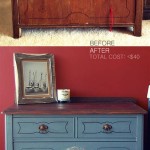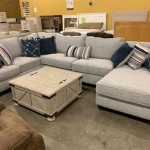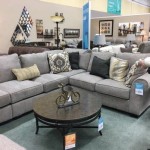How to Fix Lawn Furniture: A Comprehensive Guide
Lawn furniture, subjected to the elements year after year, inevitably requires repair and maintenance. Exposure to sunlight, rain, snow, and fluctuating temperatures can lead to rust, fading, cracking, and general wear and tear. Addressing these issues promptly not only extends the lifespan of the furniture but also maintains its aesthetic appeal and ensures its continued functionality. This guide provides detailed instructions on how to repair common problems encountered with various types of lawn furniture, ensuring a more durable and visually pleasing outdoor living space.
Before embarking on any repair project, a careful assessment of the damage is crucial. This involves identifying the type of material the furniture is made of (e.g., wood, metal, plastic, wicker) and the specific nature of the problem. Gathering the necessary tools and materials beforehand will streamline the repair process and prevent unnecessary delays. Safety precautions, such as wearing gloves and eye protection, should always be observed, particularly when working with chemicals or power tools.
Repairing Wooden Lawn Furniture
Wooden lawn furniture, while aesthetically pleasing, is susceptible to moisture damage, insect infestations, and general wear and tear. Common problems include splintering, cracking, rotting, and fading. Regular maintenance, including cleaning and sealing, is essential to prolong the life of wooden furniture. When damage does occur, specific repair techniques are required depending on the severity of the issue.
Minor scratches and blemishes can often be addressed with sandpaper. Starting with a coarse grit sandpaper (e.g., 80-grit), gently sand the affected area, working with the grain of the wood. Progress to finer grits (e.g., 120-grit, then 220-grit) to smooth the surface and remove any remaining imperfections. Once the area is smooth, apply a wood stain that matches the existing color of the furniture. Follow the manufacturer's instructions for application and drying time. Finally, apply a sealant, such as polyurethane, to protect the wood from future damage.
Cracks in wooden furniture can be repaired using wood glue and clamps. Clean the crack thoroughly, removing any loose debris. Apply a generous amount of wood glue to both surfaces of the crack and clamp them together securely. Allow the glue to dry completely according to the manufacturer's instructions. Once the glue is dry, remove the clamps and sand the area smooth. If the crack is large or irregular, consider using wood filler to fill the gap before sanding. Apply the filler according to the manufacturer's instructions and allow it to dry completely before sanding and finishing.
Rotten wood is a more serious problem that requires more extensive repairs. If the rot is localized, it may be possible to remove the affected area and replace it with new wood. Use a chisel or saw to carefully remove the rotten wood, ensuring that you remove all traces of the rot. Cut a piece of new wood to fit the void and attach it using wood glue and screws. Sand the repaired area smooth and apply a wood stain and sealant to match the existing finish. If the rot is extensive, it may be more cost-effective to replace the entire piece of furniture.
Loose joints in wooden furniture can be tightened using wood glue and screws. Disassemble the joint and clean the surfaces thoroughly. Apply a generous amount of wood glue to the joint and reassemble it, using clamps to hold it in place. Drive screws through the joint to provide additional strength. Allow the glue to dry completely before removing the clamps. If the screw holes are stripped, consider using wood glue and toothpicks to fill the holes before re-driving the screws.
Addressing Issues with Metal Lawn Furniture
Metal lawn furniture, renowned for its durability, is susceptible to rust and corrosion. Regular cleaning and painting can help prevent these problems. When rust does appear, it is crucial to address it promptly to prevent further damage. Certain types of metal furniture, like wrought iron, may also experience bending or damage to decorative elements.
Rust removal is a multi-step process. First, remove loose rust with a wire brush or sandpaper. For more stubborn rust, consider using a rust converter, which chemically transforms the rust into a stable, paintable surface. Apply the rust converter according to the manufacturer’s instructions. Once the treated surface is dry, prime the metal with a rust-inhibiting primer. Apply two coats of primer, allowing each coat to dry completely before applying the next. Finally, paint the metal with a durable outdoor paint that is designed for metal surfaces. Choose a color that matches the original finish of the furniture or opt for a new color to refresh its appearance.
Bent metal frames can sometimes be straightened. For minor bends, a rubber mallet can be used to gently hammer the metal back into shape. Place a block of wood between the metal and the mallet to prevent damage to the surface. For more severe bends, it may be necessary to use a metal bender or take the furniture to a professional metalworker. Re-welding may be required for broken frames.
Loose joints in metal furniture can be tightened using rivets or screws. Drill out the old rivets or screws and replace them with new ones. If the holes are enlarged, consider using larger rivets or screws. Alternatively, you can weld the joints together for a more permanent solution. This requires specialized equipment and skills, so it may be best to consult with a professional welder.
Powder-coated metal furniture is more resistant to rust and corrosion than painted metal furniture. However, the powder coating can still be damaged by scratches and chips. Repairing a powder-coated finish requires specialized equipment and materials. It is best to consult with a professional powder coater for repairs. Touch-up paint specifically designed for powder-coated surfaces can be used for minor chips and scratches.
Maintaining and Repairing Plastic and Wicker Lawn Furniture
Plastic lawn furniture is lightweight, affordable, and relatively resistant to the elements. However, it can fade, crack, and become brittle over time. Wicker furniture, whether natural or synthetic, requires specific care to prevent damage. Natural wicker is susceptible to moisture damage, while synthetic wicker can become brittle and cracked.
Faded plastic furniture can be refreshed with paint specifically designed for plastic surfaces. Clean the furniture thoroughly with soap and water and allow it to dry completely. Apply a plastic primer to help the paint adhere to the surface. Apply two coats of paint, allowing each coat to dry completely before applying the next. Choose a color that is designed for outdoor use and is resistant to fading.
Cracks in plastic furniture can be repaired with plastic epoxy. Clean the crack thoroughly and apply the epoxy according to the manufacturer's instructions. Clamp the cracked pieces together until the epoxy has cured. Sand the repaired area smooth and paint it to match the surrounding surface. For larger cracks, consider using fiberglass cloth to reinforce the repair.
Natural wicker furniture requires regular cleaning to prevent the buildup of dirt and debris. Use a soft brush or vacuum cleaner to remove dust and dirt from the crevices. Wipe the furniture down with a damp cloth and allow it to dry completely. Avoid using harsh chemicals or abrasive cleaners, as these can damage the wicker. Apply a sealant to protect the wicker from moisture damage. Synthetic wicker can be cleaned with soap and water. Avoid using harsh chemicals or abrasive cleaners. If the wicker is damaged, it can be repaired with wicker repair materials, which are available at most craft stores.
Broken strands of wicker can be repaired by weaving in new strands. Match the color and texture of the existing wicker as closely as possible. Use a thin needle or awl to weave the new strand through the existing wicker. Secure the ends of the new strand with glue or by tying them to the existing wicker. For more extensive damage, it may be necessary to replace the entire section of wicker.
For both plastic and wicker furniture, consider using cushions and covers to protect the furniture from the elements. This will help to prolong its life and maintain its appearance. Store the furniture indoors during the off-season to protect it from extreme weather conditions.

How To Save Yourself Money With Diy Patio Chair Repair

Wicker Furniture Repair Guide Jessica Welling Interiors

How To Replace Outdoor Sling Chair Fabric With Phifertex Youtube

5 Easy Steps To Replace The Wicker Strands Damaged

How To Save Yourself Money With Diy Patio Chair Repair

Replacing Repairing Dryrotted Fabric On Outdoor Furniture

A Fix For Rusted Outdoor Furniture Green With Decor

A Fix For Rusted Outdoor Furniture Green With Decor

How Do You Reweb Outdoor Patio Furniture Hometalk

How To Make Plastic Chairs Look New Again Free








